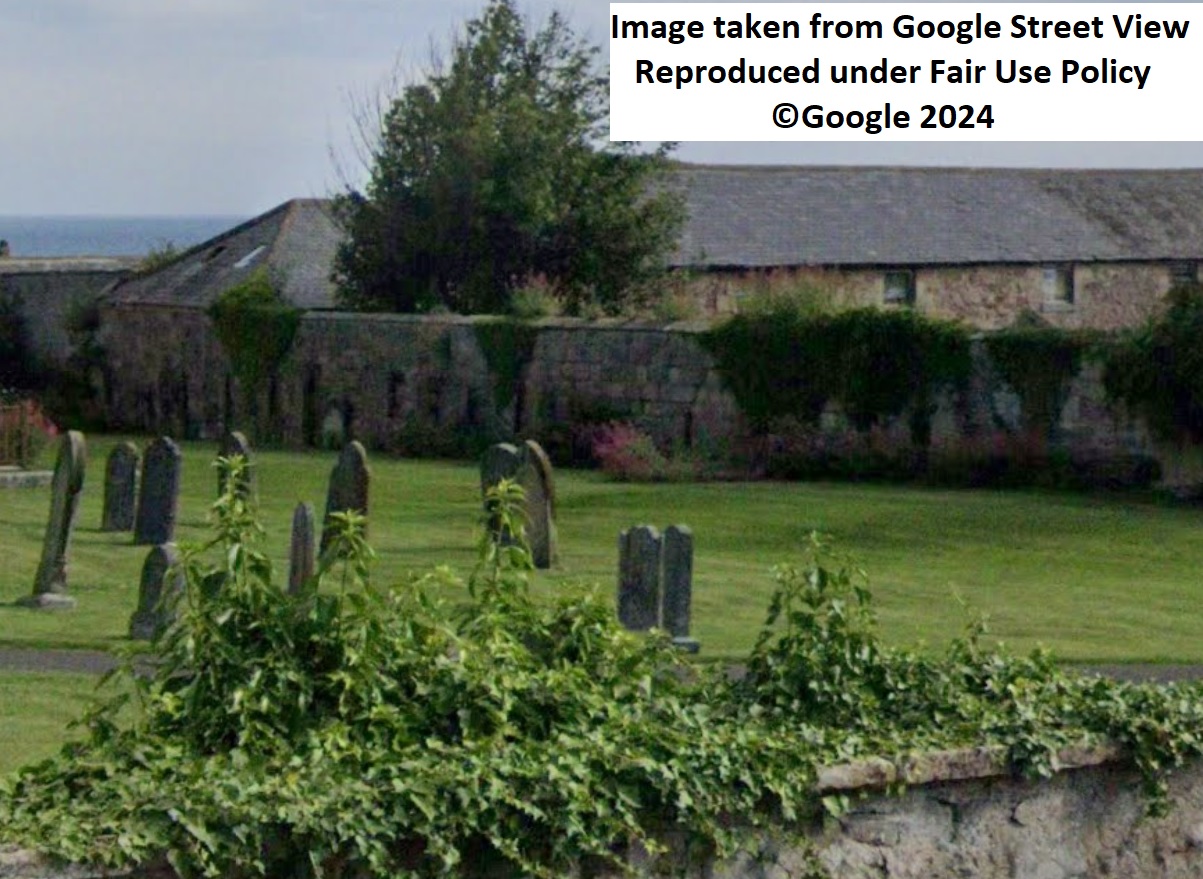Bamburgh Tower

Bamburgh Tower Details
Bamburgh Tower, the remains of a ruined tower house are now built into the wall of a churchyard
- Closest To: Bamburgh
- Access: Free Public Access
- Grid Reference: NU17883495
Bamburgh Tower was recorded in the early 15th century as a property belonging to the Augustinian Canons of Bamburgh – or at least the Master of the Canons. The remains of a medieval period wall – interpreted as being the sole remaining part of the tower, can be seen forming part of the eastern boundary wall of St Aidans churchyard, measuring about 10 metres long and over 2 metres high, with a chamfered plinth at the base. Whether it is actually the remains of the tower or another part of the friary is unknown, but there is no indication that the 10 metres was the full extent of the wall.
In 1121, King Henry I made a grant of the churches of St Oswald and St Aidan in Bamburgh to the Augustinian order of Nostell Abbey in West Yorkshire. Nostell was dedicated to St Oswald, a former king of Northumbria, and the one responsible for the spread of Christianity across Northumbria. It was not, however, until the death of the incumbent priest Algar in 1171, and the subsequent holder Hugh Murdac, the king’s clerk, that Nostell actually took possession of the churches. Even then their possession was ignored by King John, who granted the church to Peter des Roches between 1204 and 1212, and then an Italian priest between 1212 and 1215. It was not until 1221 that the priory actually gained possession by the decision of the papal court, and then it cost Nostell fifty merks a year in perpetuity. In 1228, after yet another royal grant which had to be challenged. In that year, Bamburgh was granted the status of a full priory (of St Oswald), and remained so until the Dissolution in 1537. The church was repeatedly damaged in the 14th century despite its proximity to the castle, and the revenues were granted to creditors in the reign of Edward I; in 1343 it was recommended that additional revenues be granted to the priory to sustain it. In 1380, Bamburgh was described as being “wasted and entirely destroyed” by the prior of Durham, but it was generating revenues again by 1409. It is likely that the tower as mentioned in 1415 was built to provide a more resilient defence of church valuables. In 1540, the survey carried out in front of Hugh Fuller records the “site of the manor or lately the cell aforesaid with dovecote, orchard, garden and other houses and buildings within walls there” without mention of a tower. It may be that the “house situate near the greater gate of the manor” occupied by the unfortunate Richard Stanton (blind, deaf, feeble and destitute” could refer to it – or else the tower was considered just another building in the priory. It may even have been in ruins.
Become a supporter of my work to access a more detailed history